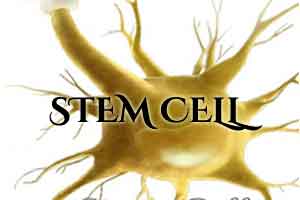- Home
- Editorial
- News
- Practice Guidelines
- Anesthesiology Guidelines
- Cancer Guidelines
- Cardiac Sciences Guidelines
- Critical Care Guidelines
- Dentistry Guidelines
- Dermatology Guidelines
- Diabetes and Endo Guidelines
- Diagnostics Guidelines
- ENT Guidelines
- Featured Practice Guidelines
- Gastroenterology Guidelines
- Geriatrics Guidelines
- Medicine Guidelines
- Nephrology Guidelines
- Neurosciences Guidelines
- Obs and Gynae Guidelines
- Ophthalmology Guidelines
- Orthopaedics Guidelines
- Paediatrics Guidelines
- Psychiatry Guidelines
- Pulmonology Guidelines
- Radiology Guidelines
- Surgery Guidelines
- Urology Guidelines
Stem cell therapy an evolving treatment for spinal cord injuries

Stem cell therapy is a rapidly evolving and promising treatment for spinal-cord injuries. According to a new literature review, published in the April issue of the Journal of the American Academy of Orthopedic Surgeons (JAAOS), different types of stem cells vary in their ability to help restore function, and an ideal treatment protocol remains unclear pending further clinical research.
Approximately 230,000 Americans suffer life-changing acute spinal cord injuries each year. These injuries lead to neurological compromise through an inflammatory response and cell death within the spinal cord. But stem cells are considered promising because they are self-renewing human cells that can differentiate into one or more specific cell types. Ideally, treatments for spinal cord injuries would limit existing cell death, stimulate growth from existing cells, and replace injured cells.
“Stem cell treatment is a realistic hope for spinal cord injury patients,” said lead author Gregory D. Schroeder, MD, spine research and clinical fellow at the Rothman Institute at Thomas Jefferson University in Philadelphia. “There is high-quality basic science research, and clinical trials in humans are underway.”
The authors evaluated research findings on different types of stem cells:
- Mesenchymal stem cells (MSCs), most commonly harvested from bone marrow, can prevent activation of inflammatory responses that lead to cell death. Functional recovery using MSCs in spinal cord injury patients has been mixed.
- Peripheral nervous system stem cells can secrete nerve growth factor to aid cell growth and temporarily act as replacement cells. Limited studies are promising, with one showing marked improvement in sensory scores but no improvement in motor function.
- Embryonic stem cells, although controversial, are resilient, and many animal studies have shown that embryonic stem cells limit inflammatory responses and promote cell growth. Very few human studies have been published about embryonic stem cell treatment for spinal cord injury patients.
- Induced pluripotent stem cells (iPSCs), derived from adult skin cells, are the newest stem cell being investigated for use in treating spinal cord injuries, but to date, no clinical studies have been published. Early animal studies indicate these cells offer benefits similar to those of embryonic cells without the ethical issues.
You can read the full article by clicking on the following link:
http://journals.lww.com/jaaos/pages/articleviewer.aspx?year=2016&issue=04000&article=00007&type=abstract

Disclaimer: This site is primarily intended for healthcare professionals. Any content/information on this website does not replace the advice of medical and/or health professionals and should not be construed as medical/diagnostic advice/endorsement or prescription. Use of this site is subject to our terms of use, privacy policy, advertisement policy. © 2020 Minerva Medical Treatment Pvt Ltd